




Winemaking hasn’t only been a career for me; it’s my passion, it’s my identity, it’s my life. Over the course of four decades at commercial wineries, I’ve had the privilege of working with some great people to make some great wines. Some of those wines got perfect scores. On one occasion, Wine Enthusiast even named me “Winemaker of the Year,” back in 2011. You can read more about individual accolades here. While these accomplishments are important to me, they’re only one part of who I am and why I’m still doing this. To understand the other parts, you need to understand 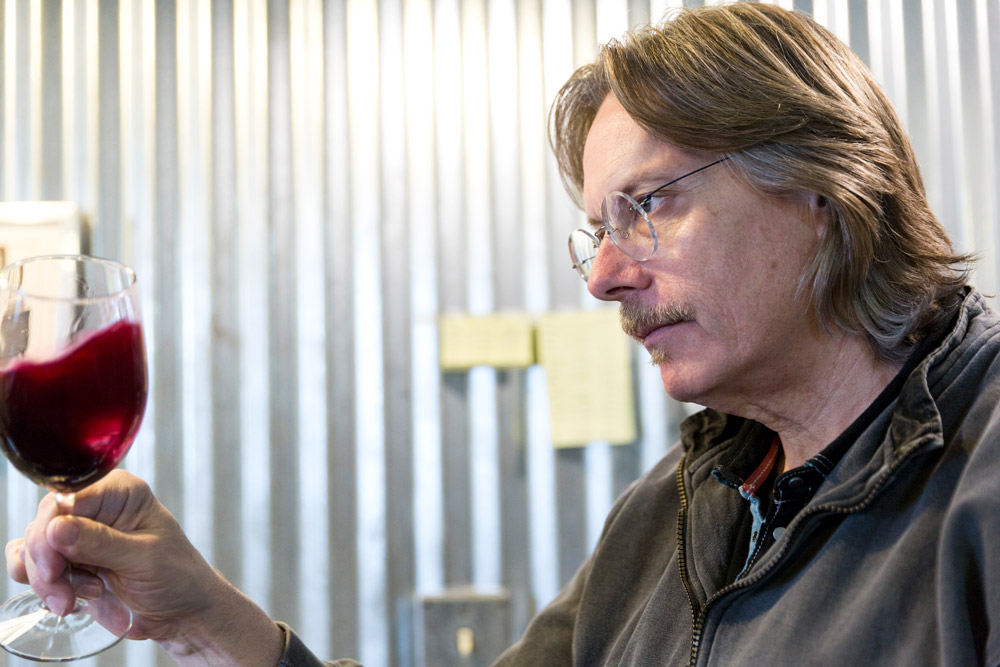 where I came from first, and the philosophy and interests that make me who and what I am.
where I came from first, and the philosophy and interests that make me who and what I am.
Why did I become a winemaker? That’s a great question—one that, at times, I have difficulty explaining. Sometimes you don’t know if you choose your occupation or if your occupation chooses you. We each have our own story and here’s mine.
I grew up on a 70-acre farm outside the small Central Valley town of Escalon. My family grew red wine-grapes and almonds, and everyone pitched in to help my dad, Robert Cabral, Sr., work the fields. By the mid- to late-1970s, red grape prices had fallen and we were experiencing a huge oversupply. One of our blocks in particular, an 80-acre parcel out near Manteca with 40-year-old carignan vines, got hit really hard. I had helped irrigate, spray, cultivate, and care for this beautiful crop all summer long, but in the fall, when I went back to high school for classes and to play football, my work on the ranches tapered off. During that Christmas break in 1977, my dad had asked me to help him out at the vineyard, and I went. When we got there, I saw this massive vineyard littered with dried, rotted grape clusters on each vine. The smell of vinegar, mold, and rot hung in the foggy air. I was stunned.
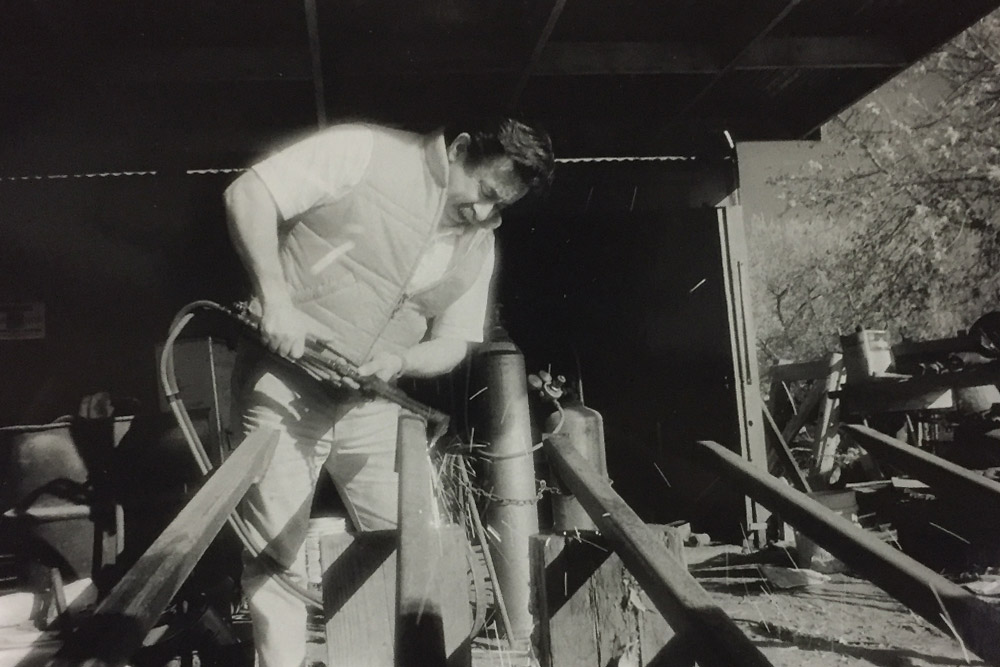 My dad, Robert Cabral, Sr
My dad, Robert Cabral, Sr
The two of us stood there in silence until my Dad explained that the wineries were full and had no more room for our grapes. He went on to tell me he had offered the grapes for free to one winery if they would just pay the picking costs, but that they declined because they had no available space. During that conversation, I felt a pain in his voice I’d never heard before. And I felt it acutely; how could he care for a vineyard and its crop for an entire year and then watch it rot helplessly and hopelessly?
This was definitely a defining moment in my life—at that moment I had to figure out a way to make sure my dad and grandpa always had a home for their grapes. Subconsciously I wanted to know I would never see that look on my dad’s face again.
So inadvertently I set out to become a winemaker. My first wine job was with Bronco Fresno, where I worked at a facility that made more than 18 million gallons (that was the smaller of their two facilities, if you can believe it). After I earned my bachelor’s degree (in enology, from Fresno State University), I got a job with a Vie-Del Wine Company, this time making wine at a 13-million-gallon facility. Winemaking on that scale is somewhat defensive—you identify problems and see what you can do to ensure you don’t make things worse. I wanted a change, so after eight years in the Central Valley I moved to Sonoma County, and got winemaking gigs with DeLoach, Kunde, Alderbrook and Hartford Court.
In those early jobs I took all of the energy I had for 13 million gallons and applied it to much smaller barrel lots. I learned a ton—not only about the ins and outs of cold soaking and fermenting, but bigger-picture issues such as problem-solving and troubleshooting processes that don’t go as planned. When I became the winemaker at Alderbrook, I was able to apply some of these lessons on an even more refined scale. I also paid much more attention to the vineyard, which was a nice change.
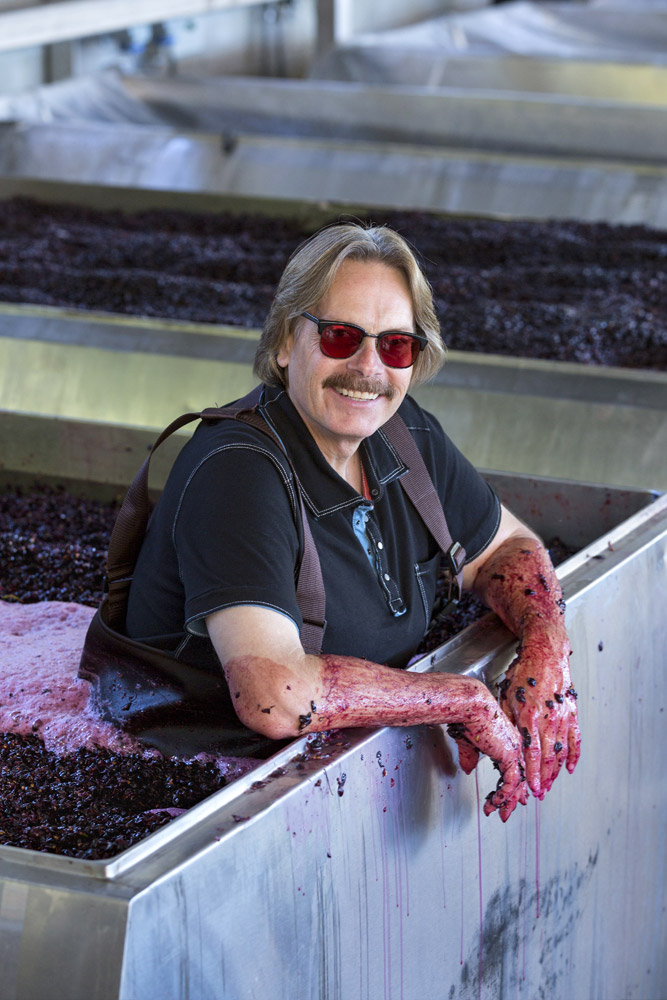 Finally, in 1998, I got the chance to make wine for Williams Selyem. I was a huge fan of Burt Williams and those wines when I took the job; I had used part of my student loan to start buying the wine in the mid-1980s, and I was one of the first few hundred people on their list (Customer No. 576, to be exact). To have the chance to be winemaker there, to be the person in charge of deciding which vineyards to work with and which lots to use from those vineyards—it was, quite literally, a dream come true. After almost 17 years at the helm, the career of a lifetime, I needed to restructure where I was going and re-prioritize my time.
Finally, in 1998, I got the chance to make wine for Williams Selyem. I was a huge fan of Burt Williams and those wines when I took the job; I had used part of my student loan to start buying the wine in the mid-1980s, and I was one of the first few hundred people on their list (Customer No. 576, to be exact). To have the chance to be winemaker there, to be the person in charge of deciding which vineyards to work with and which lots to use from those vineyards—it was, quite literally, a dream come true. After almost 17 years at the helm, the career of a lifetime, I needed to restructure where I was going and re-prioritize my time.
How involved have I been in making my wines? Very. From pruning to soil management to irrigation, I’m just as involved in growing the grapes as I am with making the wine. Out in the vineyard, I’m directing the thought process on what I believe is important to grow the best grapes. 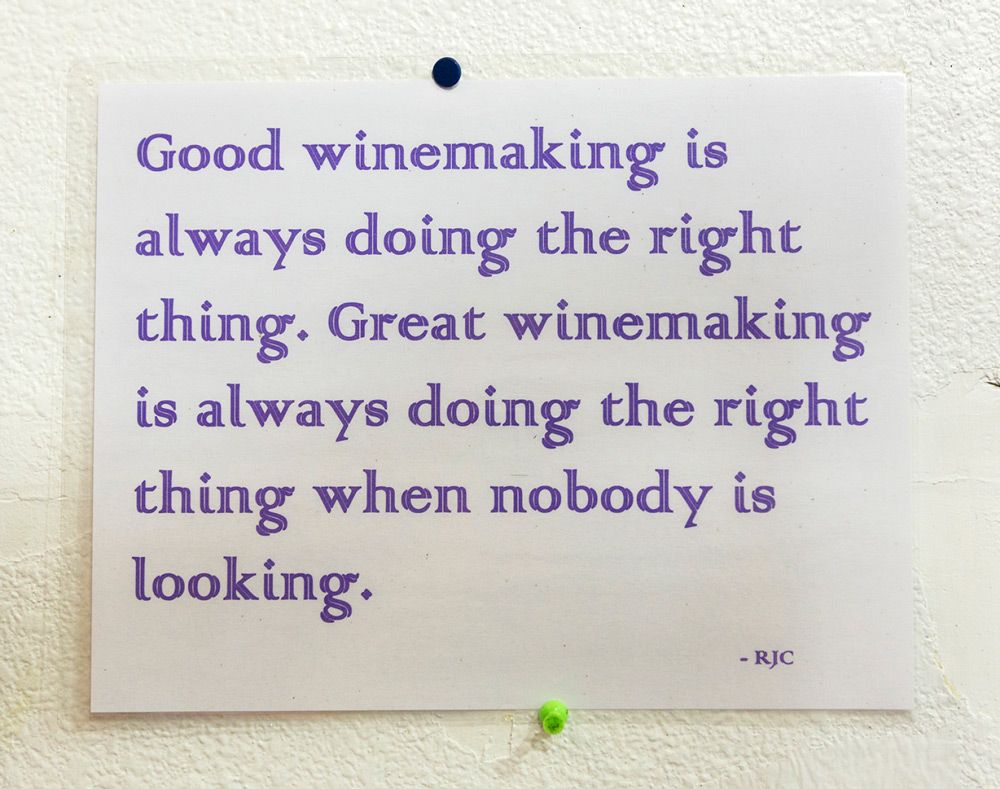 In the winery, when I blend these wines, I’m just as hands-on. Of course I can’t do all of it alone. I can’t load a press by myself. I can’t sort fruit by myself. It’s always a collaborate effort. I don’t ever want to lose sight of that. But I am doing everything I am physically able to do, and that’s what keeps me going on this project we’re calling Bob Cabral Wines.
In the winery, when I blend these wines, I’m just as hands-on. Of course I can’t do all of it alone. I can’t load a press by myself. I can’t sort fruit by myself. It’s always a collaborate effort. I don’t ever want to lose sight of that. But I am doing everything I am physically able to do, and that’s what keeps me going on this project we’re calling Bob Cabral Wines.
At the same time, I also want to make sure the people I’m working with are working with me. Over the course of my career, I’ve had one basic philosophy: Do it right all the time, even if no-one is looking. When I was at Alderbrook and later at Williams Selyem,  Heather, Paige and me I laminated an expanded version of this and tacked it to the wall in the back of a row of barrels in the winery where the public couldn't see it. The goal was to inspire interns, cellar workers, assistant winemakers, and anybody else who would be touching the wine. I’d like to think it worked—or at least for those people who saw it.
Heather, Paige and me I laminated an expanded version of this and tacked it to the wall in the back of a row of barrels in the winery where the public couldn't see it. The goal was to inspire interns, cellar workers, assistant winemakers, and anybody else who would be touching the wine. I’d like to think it worked—or at least for those people who saw it.
This speaks to a bigger point. I hope that when my career is over, when I’m ready to retire completely (I’ll be dead), my legacy is the people who have learned from me and not the many wines I have crafted. This is key for me—to think about what you have, be grateful for it, but then think about what more you can do to change someone else’s life. In general, philanthropy is very important to me and my wife, and every year we get involved with a variety of charities to change the lives of others through doing good. If nothing else, this is what I hope people take away from what we’re doing with Bob Cabral Wines; I want people to be inspired to do special things for someone else. That’s a legacy that goes beyond spectacular vineyards or stunning wines.
I’d be remiss if I didn’t mention another important part of who I am and what I’m doing with this wine. It’s an important aspect of our operation that’s reflected on our wine labels and here on the site, too. And, really, it’s all about music. And hearing—the one sense that wine eludes.
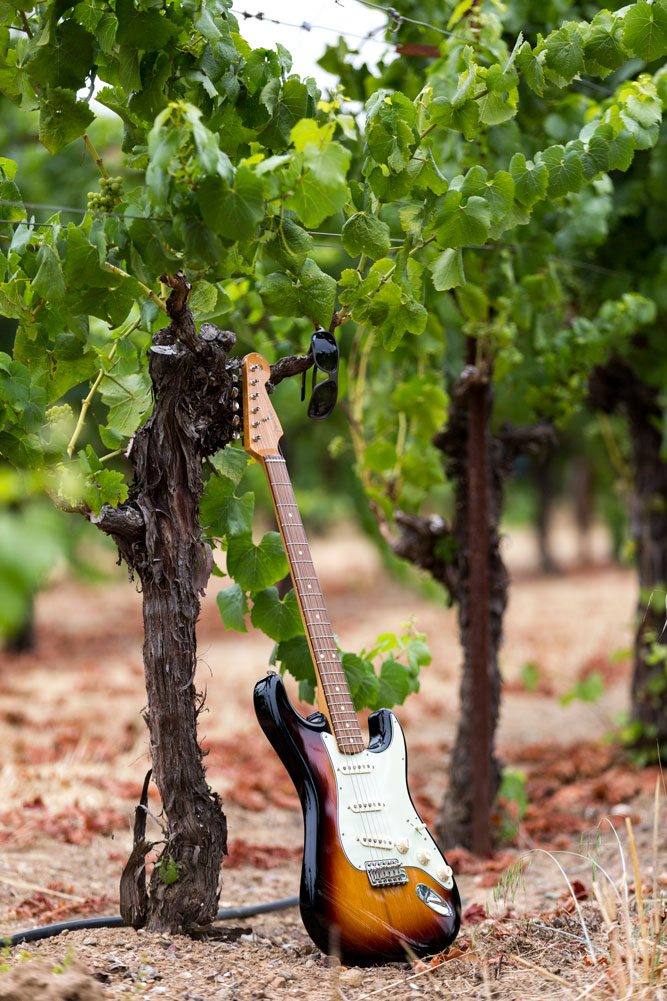
Growing up, my family and I always had music playing in our house and cars. My dad had a fairly extensive record collection that included everything from Sinatra to Johnny Cash and The Beatles, so I always enjoyed listening to all types of music. I remember seeing Alice Cooper, Montrose, Heart, Journey, KISS, and Rod Stewart when I was a young kid. As I got older, I gravitated toward even more classics—my favorites were Led Zeppelin, Tom Petty, Pink Floyd, and the Rolling Stones.
When I was in the seventh grade, a buddy gave me a copy of Jeff Beck’s “Blow by Blow” for my birthday, and a cousin gave me a copy of Pink Floyd’s “Wish You Were Here.” I recorded both albums onto cassette tapes and listened to them while I drove tractors in the vineyards for my dad. Later in life, I remember becoming fascinated with guitarist Jimmy Page, and began going to as many concerts as possible. I still have several concert tees from these days, including one from a “Day on the Green” show in 1979 that included AC/DC, Aerosmith, and Ted Nugent.
What does this have to do with my new wine company? Throughout my life, music really has shaped who I am and how I interpret and live life.
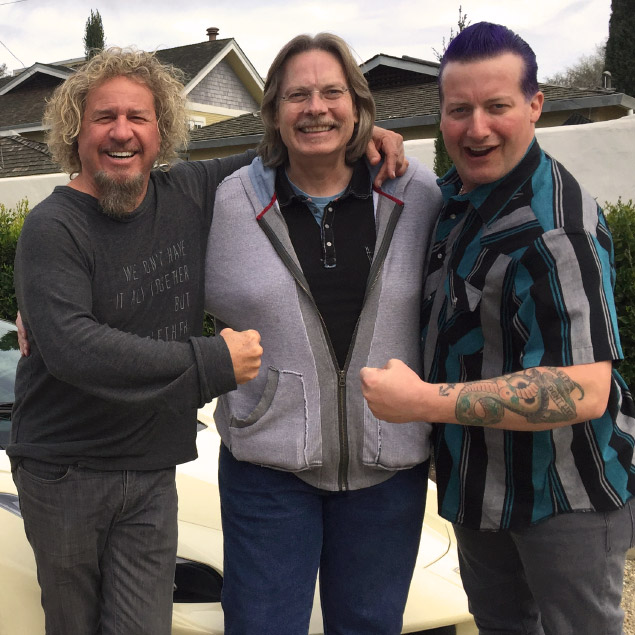 Sammy, me and TreReally, there’s such an overlap for me between music and wine. I want to craft wines that touch a person’s soul, much like a favorite song can. Everybody has a song they like to crank up and listen to—a song that just engulfs all of the senses. For some people it’s Elton John, for others it’s Frank Sinatra or Bach. For me, it’s Petty and Zeppelin.
Sammy, me and TreReally, there’s such an overlap for me between music and wine. I want to craft wines that touch a person’s soul, much like a favorite song can. Everybody has a song they like to crank up and listen to—a song that just engulfs all of the senses. For some people it’s Elton John, for others it’s Frank Sinatra or Bach. For me, it’s Petty and Zeppelin.
And that’s important, because winemaking is about an awakening of the five senses. Sight, touch, smell, and taste are relatively easy to accomplish. The bottle and packaging piques your interest. The color of the wine in your glass intensifies your curiosity as the aromas begin to fill the air. You taste the wine and your palate explodes with sensory information. The one thing wine can’t really do is appeal to your sense of hearing. I think that’s where music comes in, by hearing a song that touches your soul in the same way the wine does. In an attempt to connect more deeply with my wines, I correlate each label to an important song in my life. I challenge you to drink the wine and do the same. If you do, I guarantee the experience will be better every time.
The Label Story
My wife Heather and I were fortunate enough to work with Byron Hoffman on our label design. This process was developed though several meetings at our home in Healdsburg that would sometimes last four or five hours. We talked about our family, my passion for music (rock ‘n’ roll in particular), how the wine business has provided us with an amazing life, and why we decided to pursue this project. We believe Byron very much captured our vision. This was one of the most rewarding processes I have ever been through. It seemed to finally bring our dream to life.
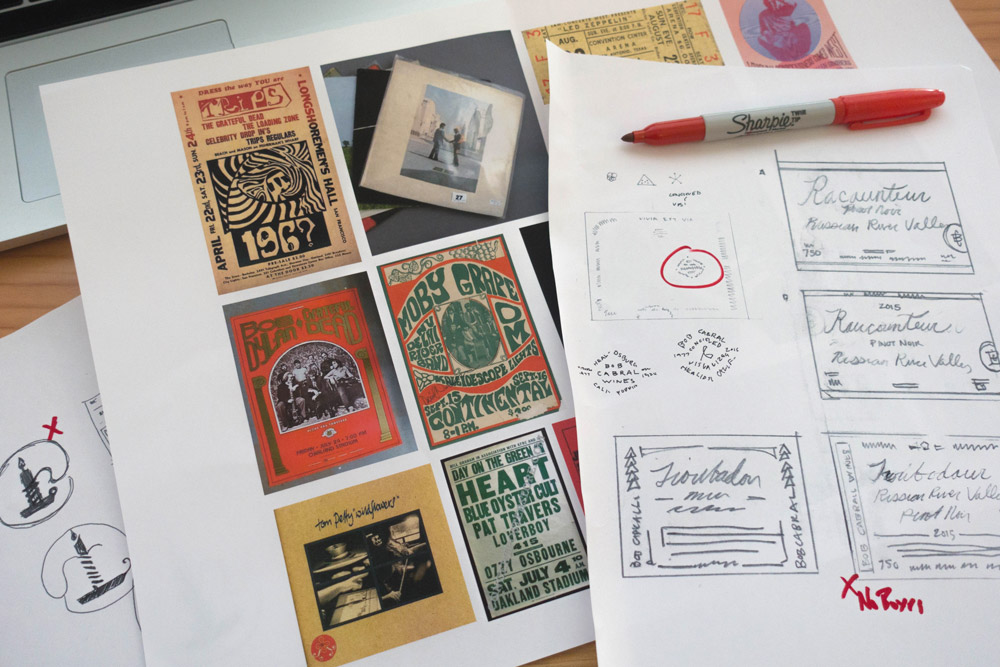
I adamantly resisted having my name “splashed” across the labels, so it may take a much closer look to find it. “Bob Cabral Wines” was used because the name “Cabral” had already be trademarked by a North American company importing Portuguese ports. That was just fine with me. We have used proprietary names for each wine. Each of those names has personal meaning and significance, those names have the largest font you’ll see on each label. Appellation, varietal, and vintage also are visible, since those are the most relevant information to any wine label. Byron deftly added many subtle elements from my fascination of old concert posters: the “bleeding” of color and backward lettering in a sort of balloon font to the color and texture of the paper stock we used. Each label also has a fragment of song lyric that I chose for a number of different reasons. Each is unique and meaningful to me, and I hope you find your own inspiration or muse as you enjoy the wines.
Rat De Cave
The French candle-stand called “Rat de Cave” or Cellar Rat, was the essential working tool used in the wine cellars of Burgundy. Its origin stems from far back in the past. In the year 1000 the Monks of the famous Abbey of Cluny, near Vougeot, used it to illuminate the caves that housed their wine barrels. This provided them with the necessary light to work with the wine barrels throughout the vintage. During fermentation, the colour of the flame showed the eventual evolution of gases as the wines underwent a chemical transformation. The Monks then knew to leave the caves due to lack of oxygen - a “canary” if you will. The handle or “rats tail” provides an easy grip and the hook permits to hang the stand on a nail or the head of an oak barrel. This would allow the Monks to rack the clear wine off of the heavy sediment or lees.
We chose this “tool” as a tribute or symbol to the traditional Burgundian methods I am using to craft our wines. Incorporating these traditions is an essential part of my winemaking thought process and vision - plus it’s really cool. You will not see this symbol on any of our labels, but should become quite familiar with it on the end of our bottle capsules. We hope that the flame inspires everyone towards a world of hope, peace and love.